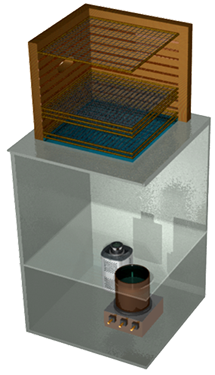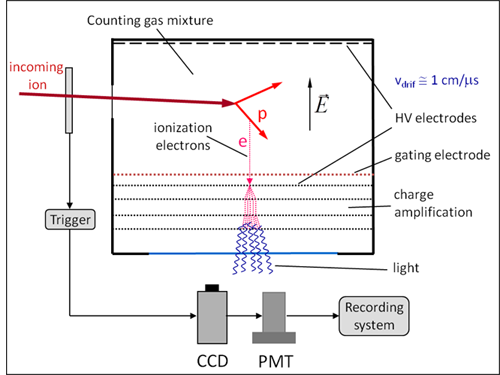
 |
| Home |
Research |
Back to OTPC |
|
|
Principles
of the OTPC operation
in: Charpak, Dominik, Farbe, Gaudaen, Sauli, Suzuki, Nucl. Instr. Methods A 269 (1988) 142 Ćwiok et al., IEEE TNS 52 (2005) 2895 Miernik et al., Nucl. Instr. Methods A 581 (2007) 194 |
 |
 |
| Construction
scheme |
Principle of operation: an ion to be studied is stopped in the active volume, filled with a gas mixture and homogenous electric field; the ion and charged particles emitted in its decay ionize the gas; ionization electrons drift towards amplification section with a constant velocity; in the final stage of the charge amplification light is emitted which is recorded by means of a CCD camera and a photomultiplier tube (PMT); the signal from the PMT is sampled by a digital oscilloscope yielding the total light intensity as a function of time; combination of this information with the CCD image allows to reconstruct the particle's track in three dimensions; a special gating electrode is used to reduce the sensitivity of the chamber when the heavy ions are implanted; the first versions of the OTPC used wire-mesh electrodes in the amplification zone, later replaced by the GEM foils. See a simple animation. |
| Home |
Badania |
Wróć do OTPC |